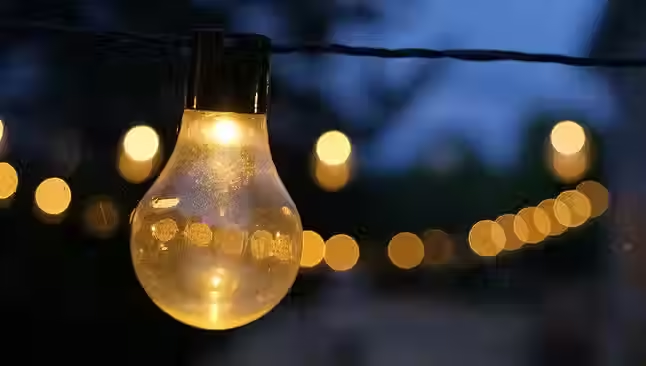
Does Turning Off Lights Help You Save Energy?
The cost-effectiveness of turning off lights depends on the type of bulb and the cost of electricity in your area. Different light bulbs have varying energy efficiency levels and lifespans, which impact how much energy—and money—you can save by turning them off when not in use.

How Different Bulbs Affect Energy Costs
The U.S. Department of Energy (DOE) provides the following breakdown of lighting costs based on an average electricity rate of $0.11 per kilowatt-hour (kWh):
1) Incandescent Bulbs (Phased Out in the U.S.)
Incandescent bulbs are highly inefficient, converting 90% of their energy into heat rather than light.
A 60W incandescent bulb uses 0.06 kWh per hour and consumes 60 kWh over 1,000 hours of use.
Operating cost for 1,000 hours: $6.60
Since 2023, federal efficiency regulations have effectively phased out incandescent bulbs due to their high energy consumption.
2) Halogen Bulbs (Also Phased Out in the U.S.)
Halogen bulbs are a more efficient version of incandescent bulbs, using about 25% less energy.
A 43W halogen bulb consumes 43 kWh over 1,000 hours.
Operating cost for 1,000 hours: $4.73
As of 2023, halogen bulbs have also been phased out due to new energy efficiency standards.
3) CFL Bulbs (Compact Fluorescent Lamps)
CFLs use about 75% less energy than incandescents but contain small amounts of mercury, requiring careful disposal.
The 15-minute rule applies:
If leaving a room for less than 15 minutes: Keep the CFL on to preserve its lifespan.
If leaving for more than 15 minutes: Turn it off to save energy.
A 15W CFL consumes 15 kWh over 1,000 hours.
Operating cost for 1,000 hours: $1.65
CFLs are declining in popularity as LED prices continue to drop and offer better efficiency without mercury concerns.
4) LED Bulbs (The Most Efficient & Cost-Effective Choice)
LEDs are 90% more efficient than incandescent bulbs.
Unlike CFLs, frequent switching does not shorten their lifespan.
LEDs provide instant full brightness and work well with smart sensors, dimmers, and automation.
A 12W LED consumes 12 kWh over 1,000 hours.
Operating cost for 1,000 hours: $1.32
LEDs are now the standard for energy-efficient lighting, with lifespans of 15,000–50,000 hours compared to just 1,000 hours for incandescent bulbs.
How Electricity Costs Impact Savings
While these calculations are based on $0.11 per kWh, electricity rates vary by region. For example:
In California, the average electricity rate is over $0.25 per kWh, making LED savings even more significant.
Many utility companies offer time-of-use (TOU) pricing, where electricity costs more during peak hours.
If your electricity provider uses TOU pricing, shifting energy use to off-peak hours can further reduce costs.
Energy-Saving Tips
Use LED bulbs whenever possible. They last longer and save the most energy.
Turn off incandescent and halogen lights whenever they’re not in use, as they are the least efficient.
For CFLs, follow the 15-minute rule to avoid reducing their lifespan.
Consider smart lighting solutions, such as motion sensors and timers, to optimize energy use automatically.
By understanding the cost and efficiency of different bulbs, you can make smarter choices that save both energy and money! 💡💰
Sources:
U.S. Department of Energy – Lighting Choices
U.S. Department of Energy – Energy Efficiency Standards


